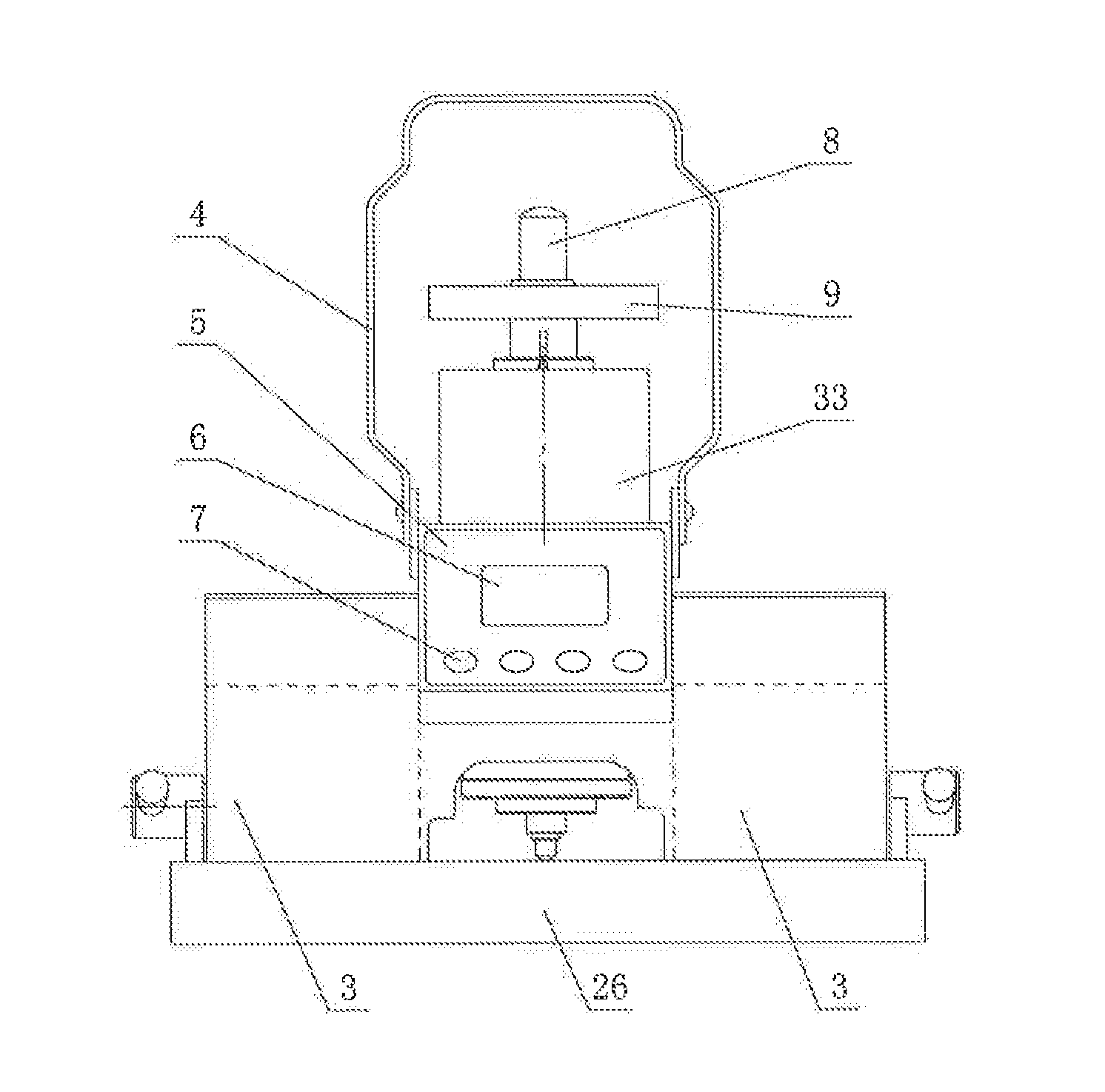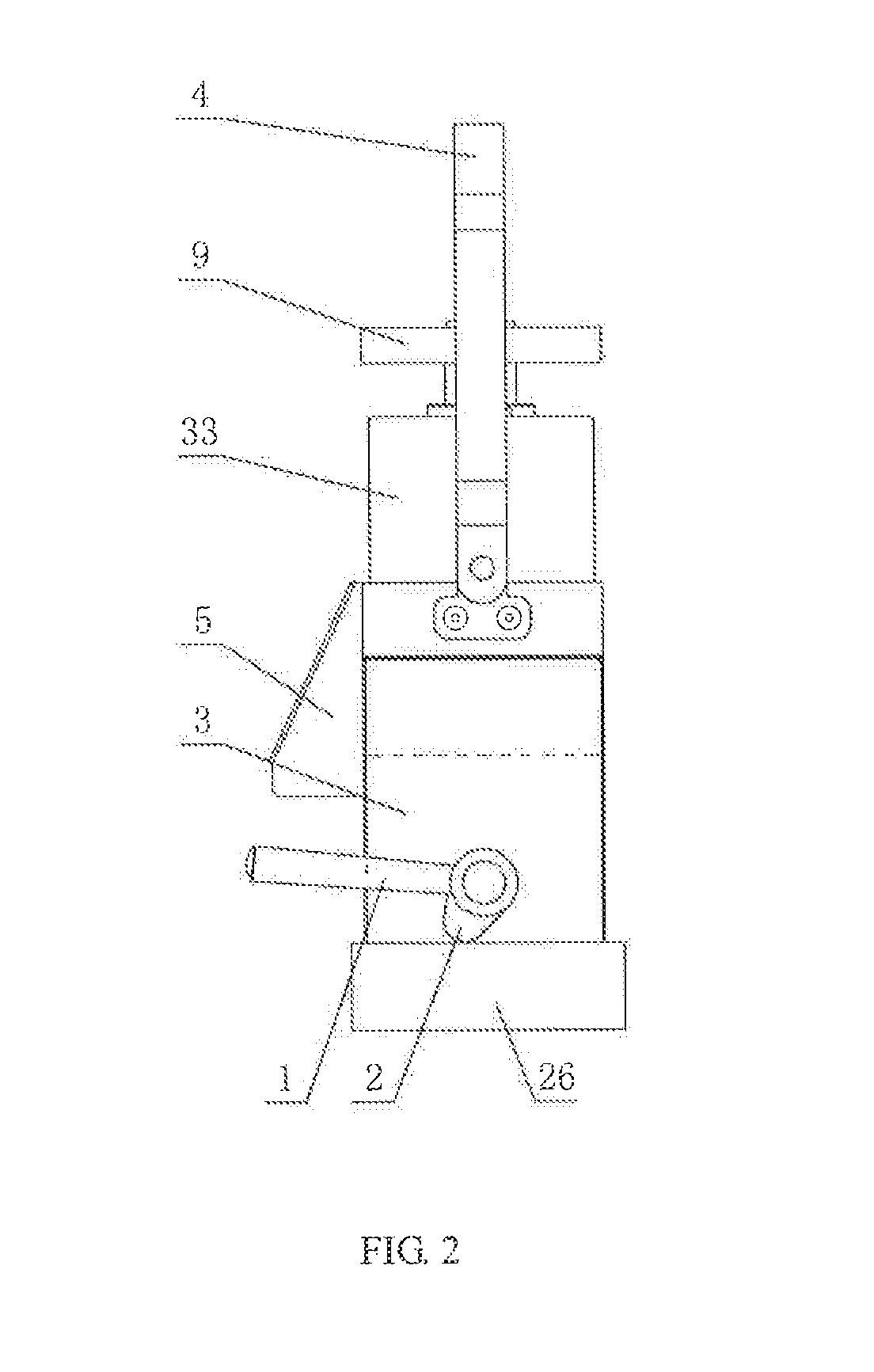Those meters are desktops and can only be used in labs to test middle and small parts.
Therefore, those hardness testers have low working efficiency and cannot monitor the hardness of parts in real time on the production site.
The Leeb hardness tester, which is quick and convenient but has low accuracy and poor reliability, is adopted for eases where sampling is not allowed and the hardness of the main body of the workpiece must be tested, in particular the weld joint hardness of key members such as the boilers, pressure containers, and pressure pipes.
The Leeb hardness tester adopts the rebound test method of dynamic application which is different from that of the Rockwell, Brinell, and
Vickers hardness test, so the converted hardness value has a relatively large error.
The
chain type hardness tester, U.S. Pat. No. 3,389,597, as shown in FIG. 4 can measure large cylindrical parts such as steel pipes and shafts, but the operation is very inconvenient and is usually executed by two persons in cooperation, one holding the tester and one mounting the chain.
The mentioned testers all have problems such as inconvenient operation, low efficiency, reading errors, failure or inconvenience to test large workpieces.
a. Complicated operation, and low efficiency: the complete test steps include: absorbing the workpiece, setting zero for the scales of the indicator gauge, applying the initial test force, setting zero for the reading drum wheel, applying the total test force, keeping the test force, reducing the test force to the initial test force, reading the hardness value on the drum wheel, and unloading all testing force;
b. Inconvenient reading, low reading accuracy, and operator's reading errors: it is required to carefully operate the drum wheel and read the hardness value represented by the scale on the drum wheel;
c.
Low resolution of the displacement measurement and force measurement, low accuracy, and operator's reading errors;
Failure to calibrate the hardness value: when the instrument is used, the hardness readings have errors once the U-shaped
elastomer undergoes slight deformation or the indicator gauge is impacted, thereby causing measuring errors; in such circumstances, the indicator gauge must be returned to the manufacturer for calibration, and the user cannot calibrate the instrument; and
Low efficiency of the Brinell hardness test, and operator's reading errors: The instrument can only make an indentation on the
test sample, and then the user is required to read the indentation
diameter with a reading
microscope and check the table to obtain the Brinell hardness value.
It costs several minutes to complete one test.
a. Complicated structure, big weight, and non-portability.
b. Inconvenient operation, and impractical. Regarding the instrument involved in the utility model patent, the locking hand wheels on both sides are required to be loosened to drop the case rack and then locked each time before testing, operated by two hands to apply the force during the test, and loosened again to support the rack and then fix the rack at the completion of the test. Such complicated working mode is very unacceptable for the operators.
c. Three force sensors are adopted, resulting in high cost.
Usually, common displacement sensors have difficulties to meet the corresponding requirements.
The main technical difficulties lie in the simple, light, and small structure of the portable hardness tester, limited inner space, and installation of the common high-accuracy displacement sensor.
In addition, it is not economical to install the high-accuracy displacement sensor on a portable hardness tester.
In the prior art, accurate testing of the hardness of the
nitriding layers on large work pieces has been a challenge because the
nitriding layers are thin but hard, with a thickness of 0.1˜0.4 mm and a hardness of over 1,000 HV5, and cannot be applied with a large test force.
The inductive displacement
transducer and
grating displacement
transducer usually adopted in the hardness tester field have difficulty meeting the mentioned requirements.
Therefore, depth-measuring Brinell and Vickers hardness testing methods have not been applied to portable hardness testers yet.
 Login to View More
Login to View More  Login to View More
Login to View More 


